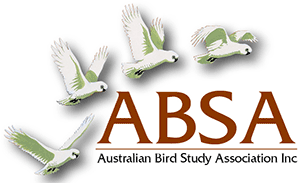The potential for food resource partitioning among the predominant species in a Mountain Ash (Eucalyptus regnans) forest bird assemblage
| Posted: |
12/08/2019 |
| Author(s): |
Alan Lill |
Food exploitation patterns in forest bird assemblages have: (1) management significance, with respect to maintaining the resources required to support these assemblages under various forest usage regimes, and (2) theoretical interest, regarding the roles of interspecific and intersexual competition in shaping such assemblages. The foraging behaviour of the bird assemblage of a vertically stratified Mountain Ash
Eucalyptus regnans forest was studied over two years. Forty-seven bird species were recorded in the study area and assemblage members mainly consumed invertebrates. The predominant member species foraged disproportionately in the short tree stratum 3–12 m above ground level, and on foliage. The tall tree stratum was also used substantially for foraging, but relatively few of the more common member species foraged in the ground cover and herb strata. Gleaning and sally-snatching were the main foraging macrobehaviours, and 22 micro-variations of these behaviours were exhibited. Hawking and probing/prising were recorded for only a few of the common assemblage member species. Sexually dichromatic Golden Whistlers and White-throated Treecreepers exhibited only limited sex-specific foraging in just vegetation stratum use. There was considerable overlap in foraging variables among species with broadly similar foraging behaviour, which did not appear particularly consistent with a major role of interspecific competition in promoting foraging niche segregation. However, there probably was some food resource partitioning, because probing, hawking and trunk- and ground-gleaning most likely gave their few proponents access to invertebrates largely unexploited by the larger foliage-gleaning and sally-snatching guilds. Maintaining the integrity of the tall and short tree strata is likely to be very important in conserving avian diversity in this cool temperate rainforest habitat.
>> Download Abstract |
File Size: 107KB
>> Download Complete PDF | File Size: 330KB
